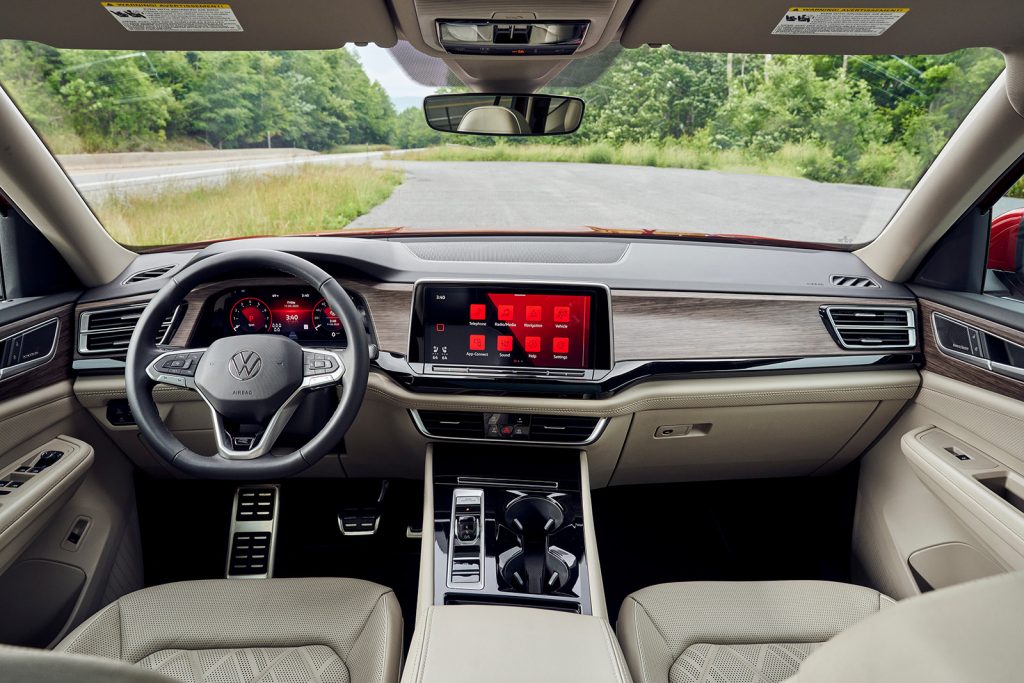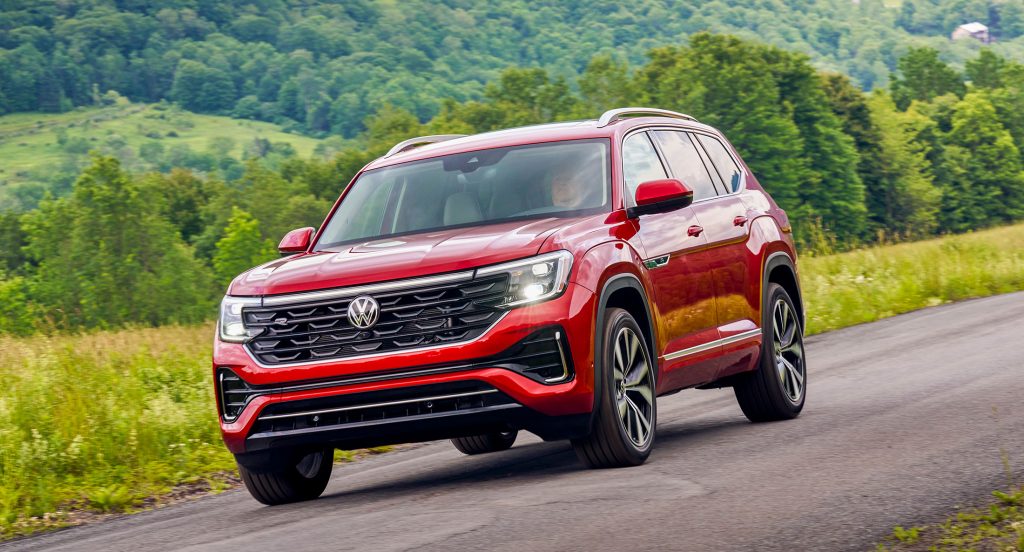Cargazing
By Derek Price
Volkswagen is an expert at making crisp, firm, fun-to-drive cars that feel like they’re built to blast down the autobahn without costing a fortune.
When does that philosophy not make sense? When you’re driving a three-row SUV the size of small bus.
Fortunately, VW eschews its typical sporty feel in its biggest, made-for-America SUV, the Atlas. This gargantuan family hauler is mercifully soft and compliant, even with 21-inch rapper wheels that can spoil the suppleness in some of its competitors.
The upside is that you can get the spunky look and feel of a Volkswagen in a massive, road-trip-friendly SUV.
The downside is that, compared to the rest of VW’s lineup, the Atlas is a bit boring. It drives with a blandness that matches its giant-box styling, almost exactly like a slew of practical, three-row SUVs it wrestles with in the marketplace.
Volkswagen is trying to make the Atlas stand out with a thorough update for 2024. It is so thorough, in fact, that I thought this might be an all-new design when I first climbed into the cabin and gazed at just how different and modern it looks compared to last year’s version.
Interior stylists hit a grand slam with this updated cabin. My SE-grade tester is sleek and eye-catching inside, almost a match for new Audis in terms of contemporary, tech-forward flashiness.
There’s just one problem. In their exuberance, designers picked style over substance for the Atlas’ revised button layout. Just like the new Golf, which has been widely criticized for the same problem, the refreshed Atlas has touch-sensitive buttons in place of traditional mechanical buttons and knobs.
That means the process can feel fussy if you want to do something simple, like adjust the temperature. I constantly found myself fiddling with it to get the temperature setting right because the buttons were either unresponsive, over responsive, or impossible to see at night.

The Atlas gets a fresh, thoroughly updated cabin this year. It has a more upscale feel, even on the base SE version priced under $38,000.
That’s right. Some important buttons aren’t backlit, which might have been borderline acceptable in 1984 but definitely not in 2024.
Aside from those user-interface oversights, the refreshed interior is spectacular. Materials and construction feel solid and expensive, despite the Atlas’ value-oriented pricing.
In addition to the heavily revamped cabin, VW also makes a major change to the Atlas’ powertrain lineup for 2024.
Gone is the old six-cylinder VR6 engine that was available as an option previously. A 2.0-liter turbocharged engine is the only one available this year, and for good reason. It’s a better choice.
The revised turbo engine makes more power than last year’s base model. With 269 horsepower, it’s impressively quick for such a hefty vehicle while still earning a 27-mpg highway rating.
Pricing starts at $37,995 for the base SE grade, which is one of the best bang-for-the-buck SUVs I’ve tested in the past year. It tops out at $52,890 for the SEL Premium R-Line model.
At A Glance
What was tested? 2024 Volkswagen Atlas SE ($37,725). Options: None. Price as tested (including $1,350 destination charge): $39,075
Wheelbase: 117.3 in.
Length: 200.7 in.
Width: 88.5 in.
Height: 70.4 in.
Engine: Turbocharged 2.0-liter four cylinder (269 hp, 273 lbs.-ft.)
Transmission: Eight-speed automatic
Fuel economy: 20 city, 27 highway
RATINGS
Style: 8
Performance: 7
Price: 7
Handling: 7
Ride: 8
Comfort: 8
Quality: 6
Overall: 7
Why buy it?
A thorough update makes the Atlas feel impressively modern, especially on the inside. It has a premium feel with an affordable price for such a roomy, powerful SUV.

